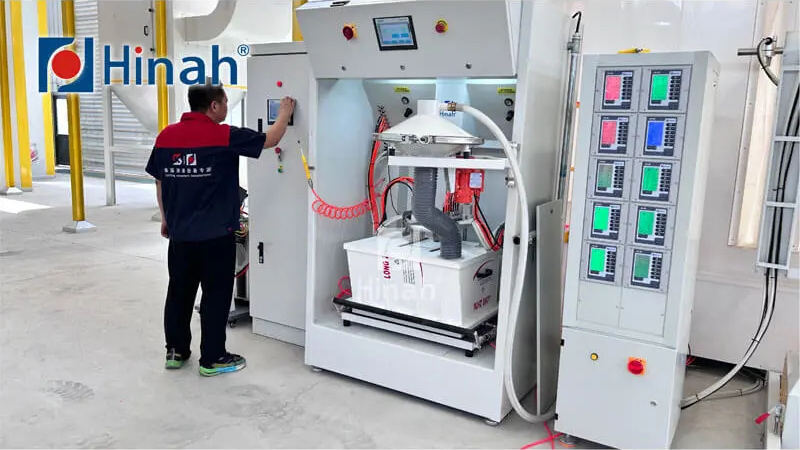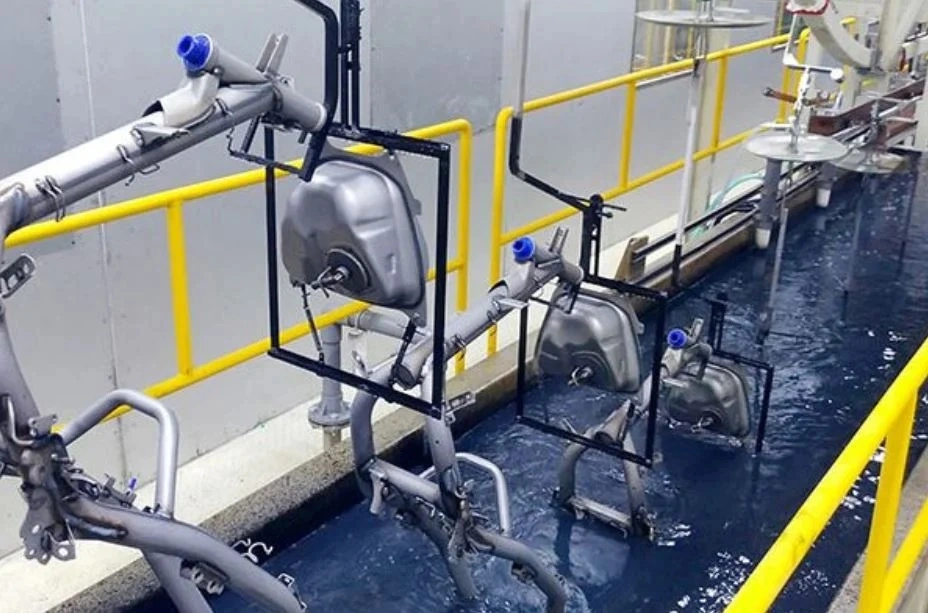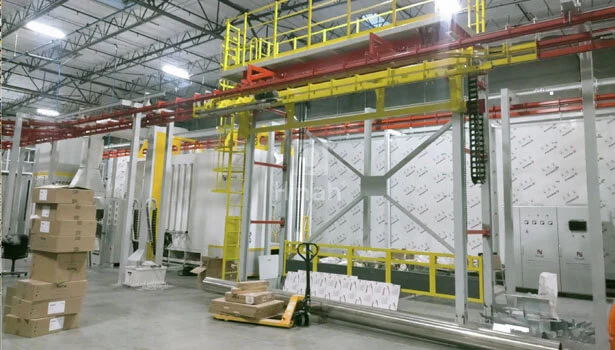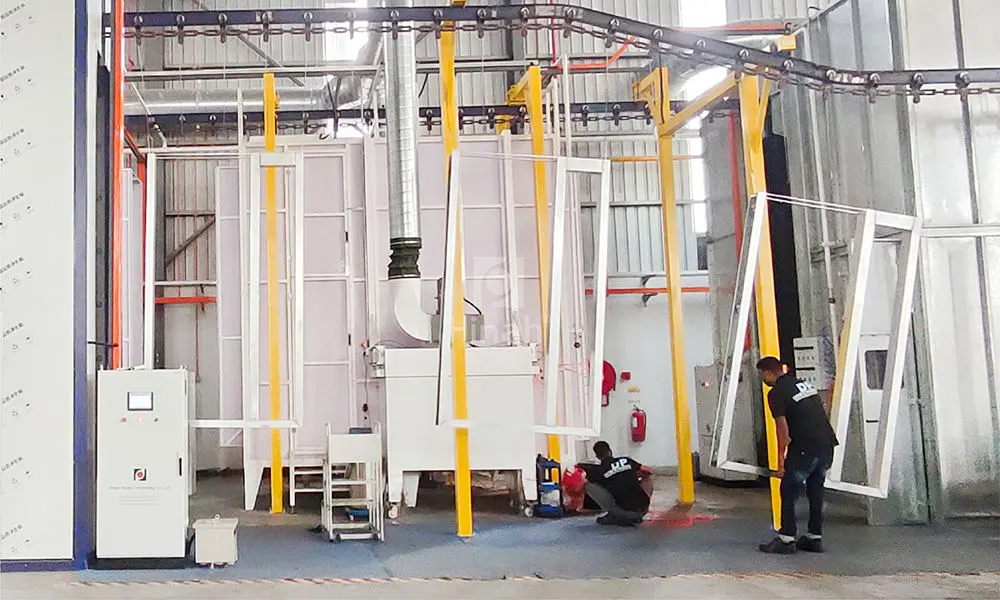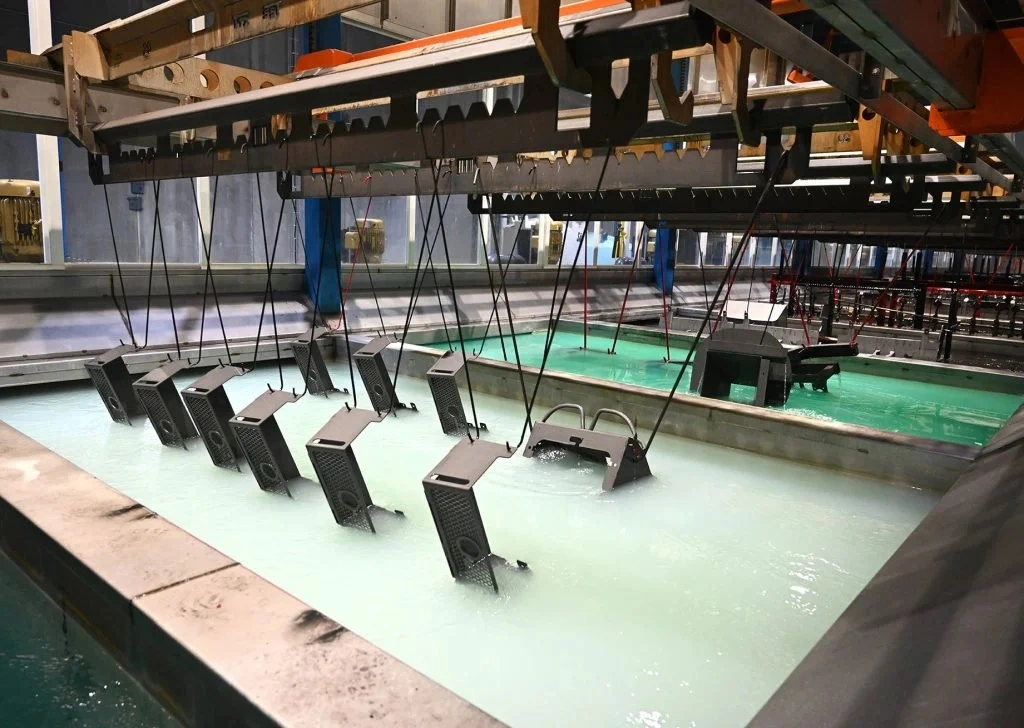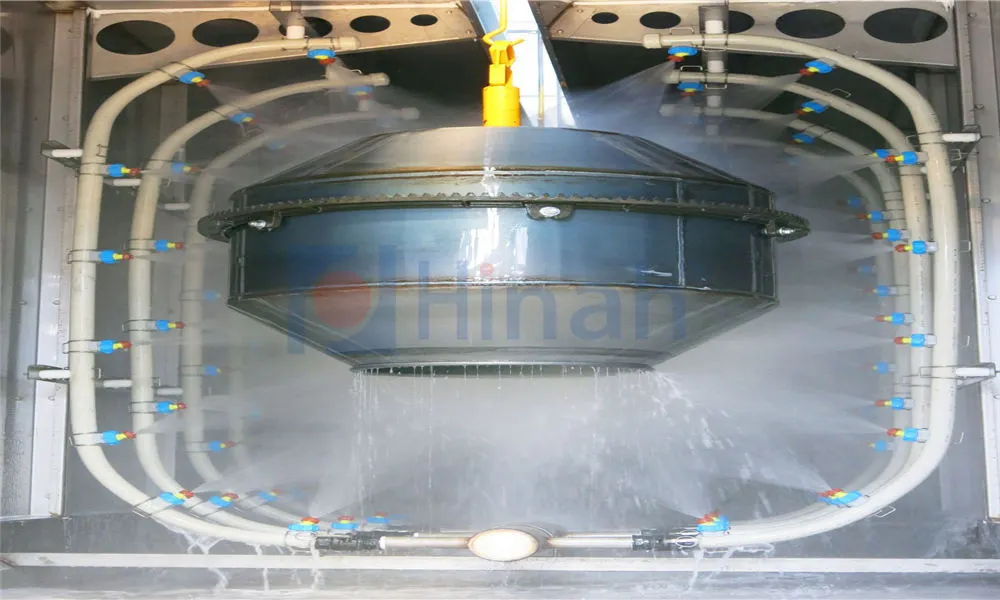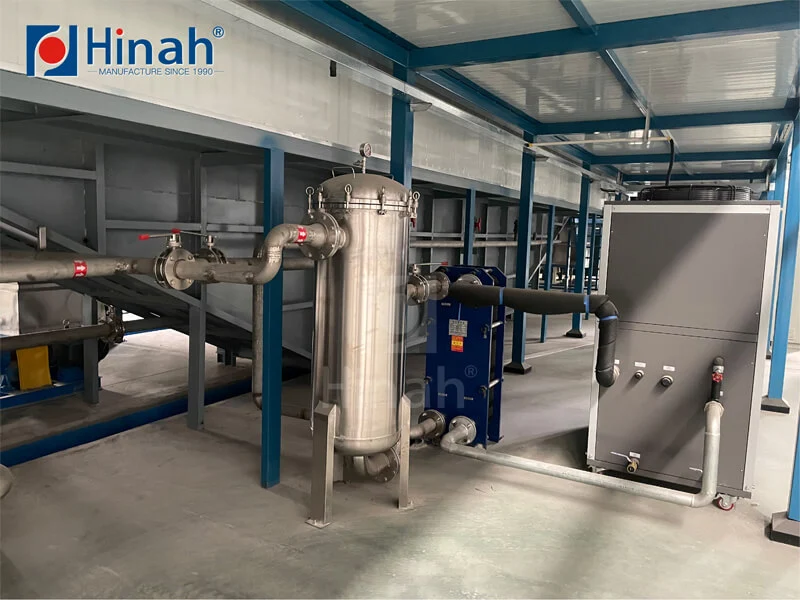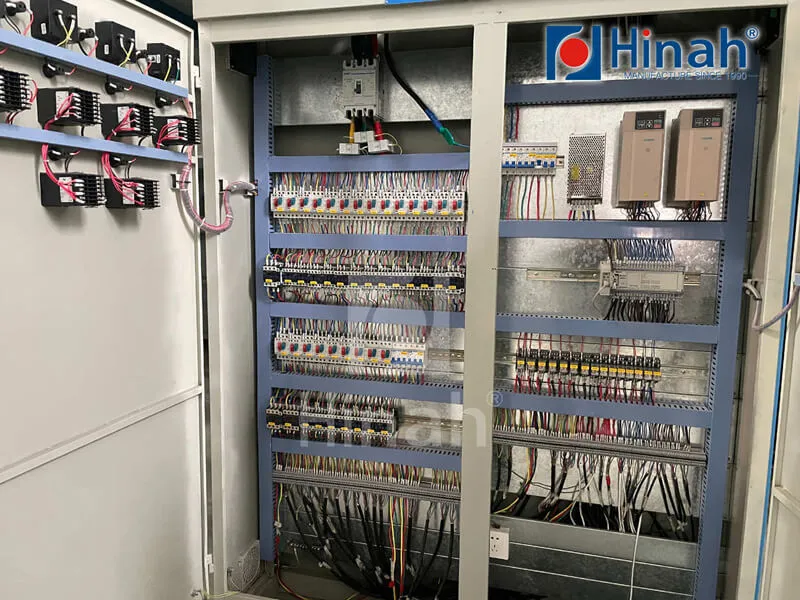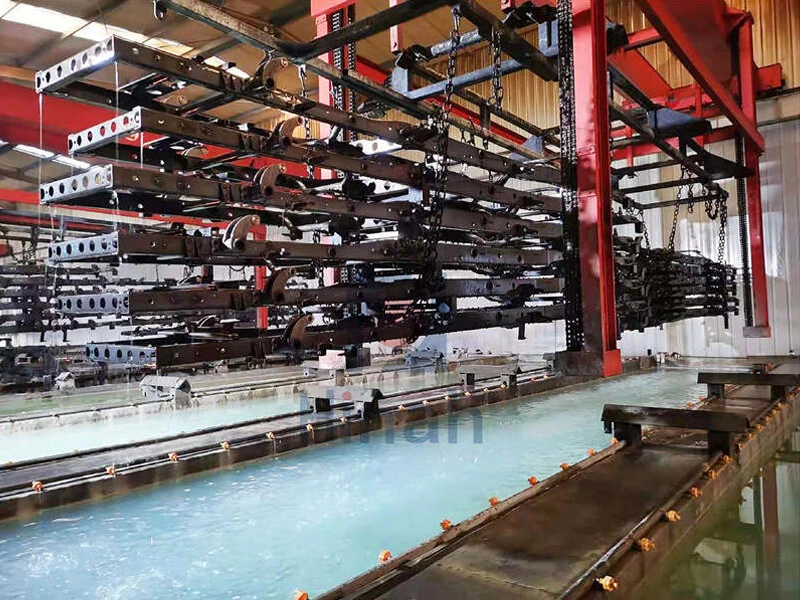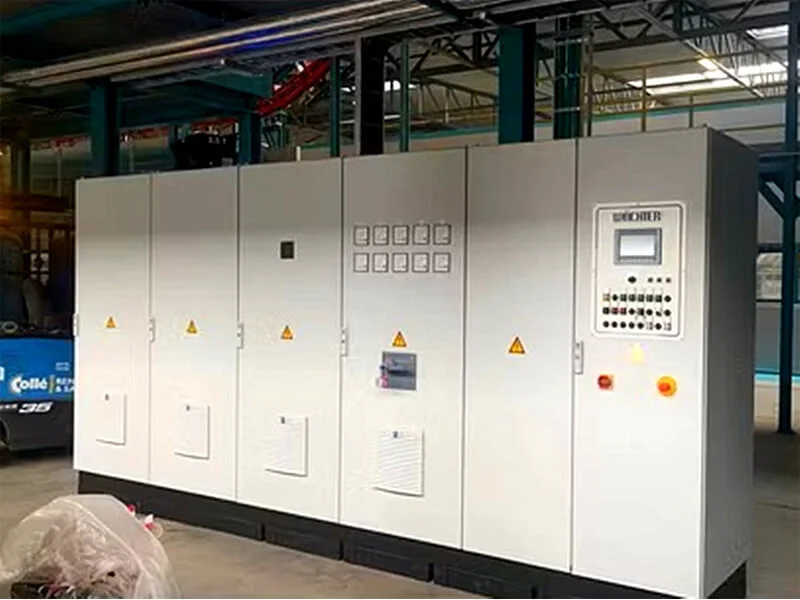In the world of industrial finishing, efficiency, consistency, and quality are paramount. At the heart of any high-performing powder coating operation lies a component often overlooked but absolutely critical: the powder coating conveyor. This system is far more than a simple track; it is the central nervous system that orchestrates the entire process, from pre-treatment to curing. A well-designed and properly maintained conveyor system directly impacts throughput, finish quality, and ultimately, your bottom line. This article delves into the intricacies of powder coating conveyor systems, exploring their types, key components, and the common challenges operators face.
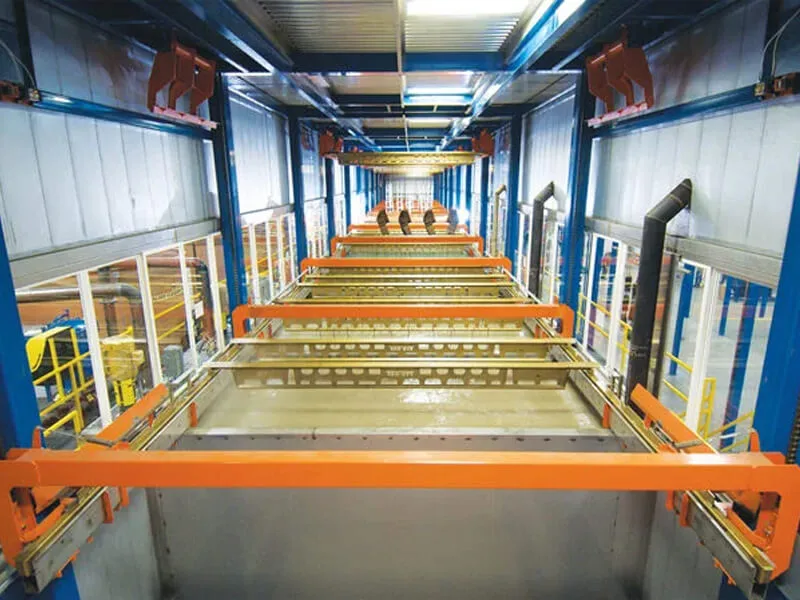
What is a Powder Coating Conveyor and Why is it Indispensable?
A powder coating conveyor is a continuous mechanical system designed to transport parts through the various stages of the powder coating process. Its primary function is to move components at a controlled, consistent speed, ensuring each piece receives uniform exposure to pre-treatment chemicals, drying ovens, the powder spray booth, and the final curing oven.
The indispensability of this system cannot be overstated. Without it, automation on an industrial scale would be impossible. It provides the consistent movement necessary for achieving a uniform film thickness and finish quality across every batch. It maximizes efficiency by minimizing manual handling, reducing labor costs, and preventing bottlenecks. Furthermore, it is engineered to handle significant weight loads and withstand harsh environmental conditions, including high heat, humidity, and exposure to chemicals.
Types of Conveyor Systems in Powder Coating
Selecting the right type of powder coating conveyor is a fundamental decision that depends on the size, weight, and shape of the parts being coated, as well as the available facility space and production volume. The three most common types are:
Overhead Conveyor Systems
This is the most prevalent type in large-scale powder coating operations. An overhead conveyor consists of a track mounted to the ceiling or supporting steelwork, from which trolleys carry parts via hooks or fixtures. Its key advantage is that it efficiently utilizes overhead space, freeing up the factory floor. It is ideal for coating a wide variety of parts, from small brackets to large automotive body panels. Modern overhead systems often feature power-and-free designs, allowing for accumulation of parts in certain zones, which provides flexibility in pacing and process control.
Floor Conveyor Systems
In a floor conveyor system, the track is installed at or below floor level. Carts or carriers that hold the parts are propelled along this track. This system is exceptionally well-suited for extremely heavy or bulky items that would be difficult or unsafe to suspend from an overhead track, such as large machinery, cabinets, or heavy structural beams. It offers great stability for heavy loads but may require more floor space and can be more challenging to integrate with overhead spray booths.
Monorail Conveyor Systems
A monorail system is a type of overhead conveyor but is typically simpler in design, often consisting of a single track without the branching and switching capabilities of a full power-and-free system. It is a cost-effective solution for linear, continuous process flows where accumulation is not required. Monorails are perfect for operations with a high volume of similar parts moving through a fixed, uncomplicated path.
Key Components and Design Considerations of a Conveyor Line
A reliable powder coating conveyor is a complex assembly of several integrated components. Understanding these parts is crucial for operation and maintenance.
Track: The physical path the system follows. It must be robust and precision-engineered to avoid dips or misalignments that cause jerky movement.
Trolleys and Carriers: These are the units that directly hold the product. They include hooks, racks, or custom fixtures designed to present the part optimally to the spray guns while ensuring secure attachment.
Drive System: This is the powerhouse, typically comprising a drive motor, chain, and sprockets. It provides the motive force to pull the entire chain or belt through the line.
Control System: The brain of the operation. Modern systems use programmable logic controllers (PLCs) to manage speed, start/stop functions, and integrate with other line equipment like ovens and sprayers.
When designing a conveyor system, several factors must be considered:
Line Speed: Calculated based on the curing oven length and required cure time. Speed consistency is non-negotiable for quality.
Weight Capacity: The system must be rated to handle the maximum weight of the loaded fixtures.
Part Fixturing: How parts are hung is critical for maximizing transfer efficiency and minimizing powder waste. Fixtures should shield areas that cannot be coated and allow for good grounding.
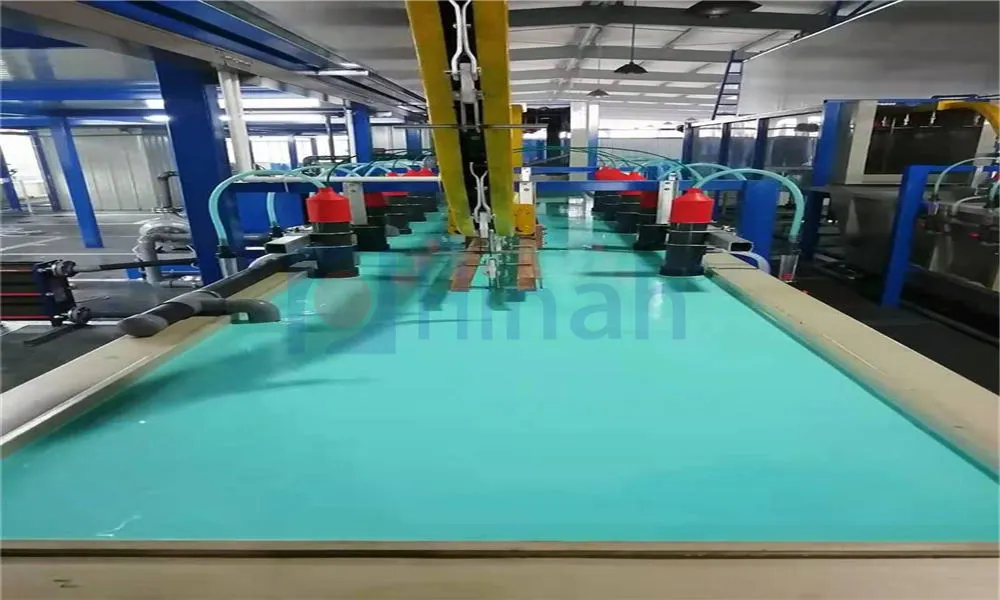
Maintenance and Lubrication: Ensuring Longevity and Smooth Operation
Regular maintenance is the single most important factor in preventing powder coating conveyor downtime. The system operates in a punishing environment where powder overspray, heat, and chemical vapors can cause rapid wear and failure if not managed.
A disciplined maintenance schedule should include:
Daily Visual Inspections: Checking for broken hooks, worn chain links, and any signs of track misalignment or obstruction.
Lubrication: This is critical. The conveyor chain requires regular lubrication with a high-temperature, dry-film lubricant specifically designed for powder coating environments. Traditional wet lubricants attract powder overspray, creating a thick, abrasive paste that accelerates wear and can contaminate the finish on products. Automated lubrication systems are a worthwhile investment for consistent application.
Cleaning: Regular cleaning of the track, trolleys, and especially the grounding points is essential to maintain proper electrical grounding for the parts. Poor grounding leads to inefficient powder application and defective finishes.
Common Problems and Troubleshooting for Powder Coating Conveyors
Even with a robust design, operators can encounter issues with their powder coating conveyor. Recognizing and addressing these problems quickly is key to maintaining productivity.
Poor Grounding: This is the most frequent cause of application problems. If a part is not properly grounded, the electrostatic attraction between the powder and the part is weak. This results in poor wrap (coating on the backside of the part) and low transfer efficiency, where powder fails to adhere and falls into the recovery system. The solution involves regularly cleaning contact points between the hook, trolley, and track, and testing ground integrity with a megohm meter.
Chain Jerking or Slipping: Erratic movement creates a nightmare for consistency. This can be caused by a worn drive chain, a failing motor, a build-up of debris on the track, or improper tensioning. Regular inspection and maintenance of the drive components are necessary to prevent this.
Excessive Powder Build-Up: When powder accumulates on conveyor tracks, trolleys, and hooks, it can fall onto cured parts in the oven, contaminating the finish. It also creates the abrasive paste that wears out components. Using the correct dry-film lubricant and implementing air blow-off stations at strategic points can significantly reduce this problem.
High-Temperature Failures: The curing oven exposes the conveyor to extreme heat. Standard lubricants will burn off, and certain components can fatigue. It is vital to use a system and lubricants specifically rated for the continuous temperatures present in your curing oven.
Fixture-Related Issues: Over time, fixtures can become coated with a thick, insulating layer of cured powder, which hinders grounding. They must be regularly stripped and cleaned. Furthermore, fixtures can break or bend, leading to parts falling off or being presented incorrectly to the spray guns.
In conclusion, the powder coating conveyor is not merely a piece of hardware but a strategic asset. Investing in the right system for your application and committing to a rigorous preventative maintenance program will pay dividends through increased uptime, superior finish quality, reduced powder consumption, and lower long-term operating costs. By understanding its function and addressing common problems proactively, you ensure that the backbone of your finishing line remains strong and reliable for years to come.


